Want to build bigger, more muscular biceps? Free weights, such as barbell curls, are effective, but doing biceps workouts with machines can help isolate and fully fatigue your bicep muscles.
Biceps machine exercises are a great way to target and isolate your biceps muscles for maximum growth. However, with so many bicep machine exercises, it can be challenging to determine which ones are the best.
Whether looking for a classic bicep curl machine or an innovative Bayesian Curl, our expert tips will ensure you maximize every rep for optimal muscle growth.
Say goodbye to guesswork and take a well-informed, practical approach to biceps training.
This blog post will show you the best biceps machine exercises and how to use them. We’ll also provide a sample workout routine and tips.
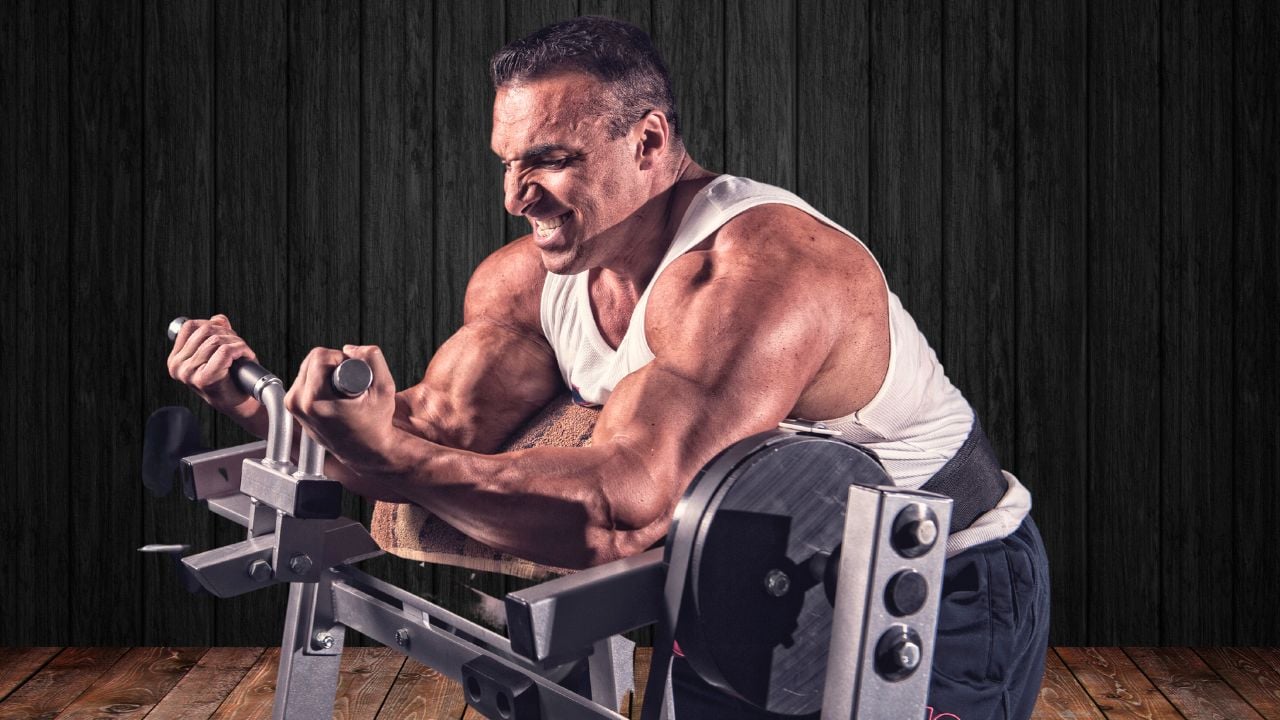
What Are Bicep Machine Exercises?
Bicep machine exercises are strength training exercises specifically targeting the biceps muscles. They are primarily used with specialized gym equipment or machines.
These exercises are designed to work the biceps, which can lead to increased arm muscle size, strength, and definition.
Bicep machines are especially beneficial for beginners or those with joint issues. Because the machine guides the movement, there is a reduced risk of incorrect form and injury.
It is also easier to perform advanced techniques with a machine, such as drop sets and forced reps.
Want to take your gains to the next level? Discover your daily calorie needs with our free TDEE calculator.
Types of Machines Used for Bicep Workout
- Preacher Curl Machine: This machine has a padded, angled surface that supports your arms and an adjustable weight’s system.
- Cable Machines: Cable machines provide a more versatile way to perform bicep curls with consistent tension using attachments like ropes or bars.
- Preacher Curl Bench: Often combined with a barbell or dumbbell, the preacher bench supports your arms.
- Smith Machine: Though typically used for various exercises. It can be used for bicep curls with a controlled bar path.
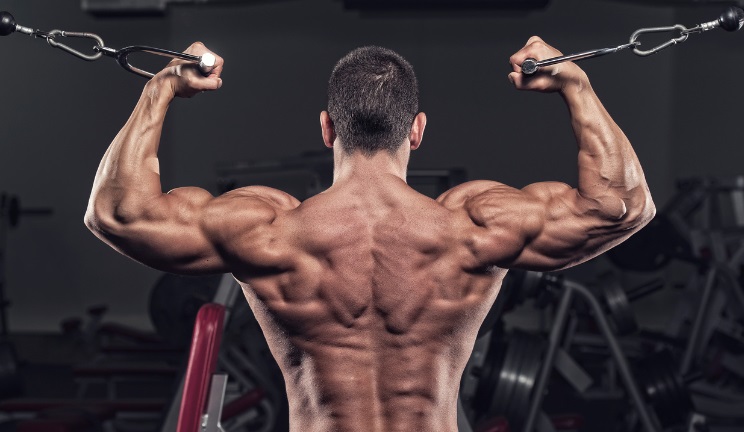
Top Gym Machines For Bicep Workouts
Machines help isolate muscle groups, improve form, and make it safer to lift heavier weights. Here are five gym machines you can use for a complete bicep workout.
1. Preacher Curl Machine
The preacher curl machine is a great way to achieve a peak contraction of the biceps muscles. The design of the machine forces your arms to remain in a fixed position, which helps to isolate and target the biceps.
Additionally, the machine allows you to use a heavier weight than you could with free weights, which can lead to greater muscle growth.
With a preacher curl, you get many benefits that don’t come with regular bicep curls. Do preacher curl with a slightly wider grip to impart more load on short-head biceps.
There are many ways to do preacher curls, each offering benefits.
- Dumbbell Preacher Curls: Allow for a greater range of motion and independent arm movement.
- Reverse Grip Preacher Curls: Target the brachialis muscle and emphasize the outer portion of the biceps.
- Machine Preacher Curl: Provide a more controlled and stable environment for the exercise.
- Cable Preacher Curls: Provide continuous tension throughout the movement.
How To Do Machine Preacher Curl
- Adjust the seat height to ensure your elbows align with the machine’s pivot point.
- Grasp the handles with an overhand grip, palms facing forward.
- Your hands should be shoulder-width apart.
- Rest your upper arms on the padded support bar.
- You should curl the weight towards your chest and keep your elbows close to your sides. Squeeze your biceps at the top of the movement.
- Slowly lower the weight back to the starting position.
- Be sure to maintain weight control throughout the entire range of motion.
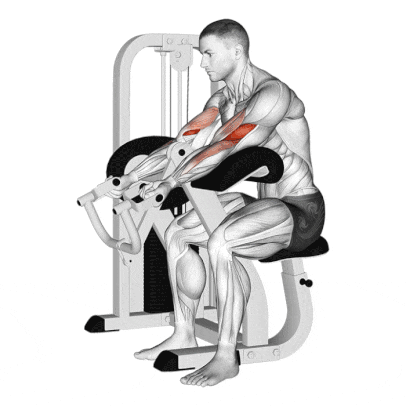
2. Cable Bicep Curls
The cable machines are an exercise that trains the biceps in isolation and places the muscles under constant tension throughout both the concentric and eccentric phases. This is one of the most significant benefits of cable bicep training over other methods.
Using the cable machine, you’ll be able to hit all the heads of the biceps from different angles and through a range of motions.
Cable bicep curls can be done on a cable machine with different attachments like a straight bar, rope, or EZ bar.
Adjustments To Target Different Bicep Muscles
1. Grip Width and Angle
- Wider grips on the straight or EZ-bar target the short head of the biceps more effectively.
- Narrower grips shift the focus to the long head of the biceps.
2. Hand Position
- In the standard bicep curl, your palms face upward (supinated grip). This curl primarily targets the biceps brachii muscle.
- In the hammer curl, your palms face each other (neutral grip). This curl works both the long of the biceps and the brachialis muscle.
- In the reverse curl, your palms face downward (pronated grip). The primary focus of the reverse curl is on the brachialis muscle and the brachioradialis muscle (a forearm muscle)
3. Cable Height Adjustments
- Varying the cable height (low, mid, high) affects the angle of resistance and can subtly change muscle activation.
- High cable curls focus on the lower section of the biceps, whereas low cable curls emphasize the upper section.
4. Arm Variations
- Doing both arm bicep curls can help you lift more weight and make your arms bigger.
- A Single-arm curl allows greater focus and isolation on each bicep. This can be beneficial for addressing muscle imbalances.
Know More: 10 Best Bicep Cable Exercises For Building Bigger Arms
How To Do Bicep Machine Cable Curl
- Adjust the pulley to the lowest setting and attach a straight bar or rope to the cable.
- Stand facing the machine with your feet shoulder-width apart and your knees slightly bent.
- Grab the bar or rope with an underhand grip, with your palms facing up.
- Keep your elbows close to your sides and your upper arms stationary throughout the exercise.
- Slowly curl the weight up towards your shoulders.
- Squeeze your arms at the top of the exercise, and then slowly lower the weight back to where you started.
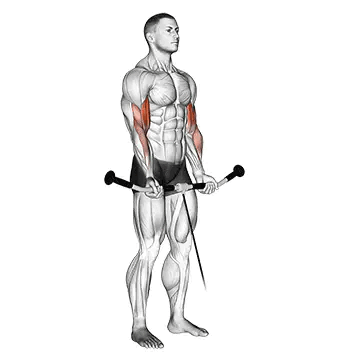
3. Assisted Chin Up Machine
Chin-Up and Pull-ups are some of the best bodyweight exercises for building upper body strength, particularly in the back and bicep. However, they can be challenging for many people, especially those new to fitness or recovering from an injury. This is where the Assisted Pull-Up Machine comes into play.
This specialized gym equipment has a counterweight system that offsets some of your body weight, making it easier to perform pull-ups or chin-ups.
The machine typically consists of a pull-up bar attached to a weight stack via a pulley system and a platform or knee pad to place your knees or feet on.
Chin-ups and pull-ups are often used interchangeably. However, they do have some differences.
- A chin-up is an exercise where the palms face toward the body (underhand or supinated grip) while gripping the bar. This grip targets the biceps more than the back and shoulders.
- A pull-up is an exercise where the palms face away from the body (overhand or pronated grip) while gripping the bar. This grip targets the back and shoulders more than the biceps.
Know More: 25 Different Types Of Pull-Ups And Chin-Ups (Variations)
How To Do Machine Assisted Chin Up
- Adjust the machine to the appropriate weight to help you complete the chin-up. The more weight you select, the easier the chin-up will be.
- Place both knees on the pad and grip the handles with an underhand grip, palms facing towards you.
- Exhale and pull yourself until your chin is over the bar
- Squeeze your biceps at the top of the movement.
- Inhale and slowly lower yourself back down to the starting position.
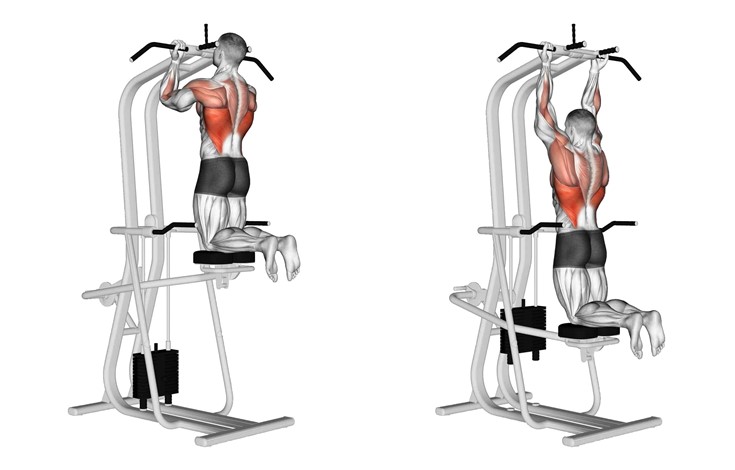
4. Smith Machine Bicep Curls
Smith Machine Bicep Curls are a different way to do the traditional bicep curl. They use a special machine called the Smith Machine, a barbell attached to steel bars that move slowly.
As the bar path is controlled, one can concentrate more on the contraction and extension of the biceps without worrying about the bar balance.
You can vary your grip (wide, narrow, underhand, overhand) to target different parts of the biceps and arms.
Note:
- The Smith machine’s fixed bar path can restrict your natural range of motion.
- Some exercises can be uncomfortable if you force your body into a fixed path.
- The Smith machine can make it hard for beginners to develop the proper form and stability for free-weight exercises.
How To Do Smith Machine Drag Curls
Smith machine drag curls offer several benefits over traditional bicep drag curls.
- Set the Smith machine bar to a height just above your waist.
- Stand in front of the bar with an underhand grip, hands shoulder-width apart.
- Step back a few inches to allow the bar to clear the machine.
- Raise the bar across your body, bringing your hands toward your shoulders while pulling your elbows behind your chest.
- Pause at the top of the movement and squeeze your biceps.
- Slowly lower the bar back down to the starting position.
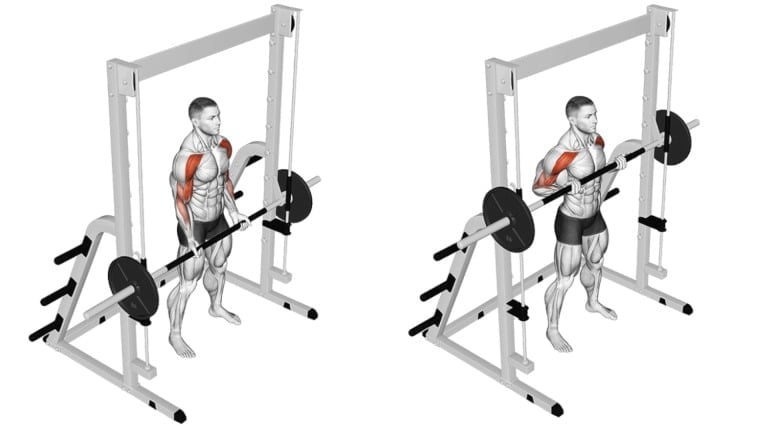
5. Double Pulley Cable Machine
The Double Pulley Cable Machine is versatile gym equipment for targeting and isolating the bicep muscles. It offers constant tension throughout the range of motion, unlike free weights.
This machine has two adjustable pulleys from which you can do various pulling and lifting movements, optimizing bicep training for strength, hypertrophy, or endurance.
How To Do Overhead Cable Curl
- Attach a handle to a cable machine, with the pulley set to a position higher than your head.
- Stand in the middle of a cable machine with a D-handle in each hand.
- Grip the D-handles with an underhand grip, palms facing down.
- Extend your arms overhead until they are fully extended.
- Keep your elbows stationary as you curl the handles towards your shoulders.
- Exhale as you curl the D-handles and squeeze your biceps at the movement’s top.
- Inhale as you slowly lower the handles back to the starting position.
- Repeat for 8–12 repetitions.
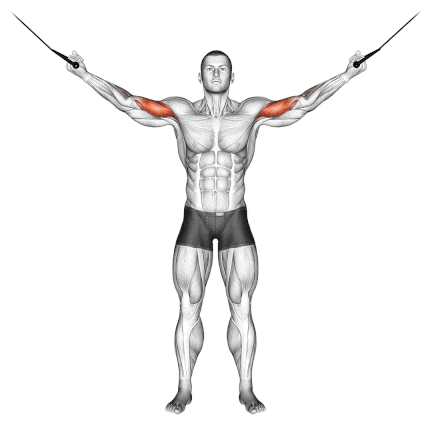
Bonus: Behind The Back Cable Curl (Bayesian Curl)
The Behind The Back Cable Curl, aka Bayesian curl, is the same concept as the incline dumbbell curl. Your arms will be curling with your elbows behind you, which emphasizes the long head.
Cable curls behind the body are a fantastic way to really focus on your outer biceps while helping to avoid any unwanted muscle imbalances. Give this cable bicep workout a go—you’ll love the results!
How To Do Bayesian Curl
- Connect a single cable handle to the bottom of a cable pulley.
- Grab the handle with an underhand grip and then face away from the machine.
- Step out from the cable station and let your arm travel behind your torso until you feel a good biceps stretch.
- Curl the handle toward your shoulder by squeezing your biceps as hard as possible.
- Lower the weight back down under control until your elbow is fully extended.
- Repeat for the ideal number of reps to complete the set.
- Now, switch arms to complete the exercise on your right side, and then alternate between arms for sets.
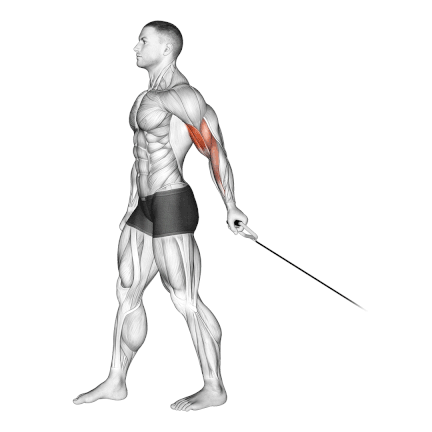
To Stay Motivated: 150+ Gym Workout Motivational Quotes To Stay Fit
Conclusion
The gym can be a good way to build bigger, more muscular biceps, improve curling form, and isolate the bicep. Different handles and movement variations allow you to target all areas of the biceps.
Some of the most popular gym machines for biceps workouts include the preacher curl machine and cable curl stations.
The Smith machine and chin-up assisted machines can be used to do a full biceps workout.
So, the next time you’re at the gym, please note these powerful tools for building your biceps. Use biceps machines to grow, define, and break down plateaus.

Manish is a NASM-certified fitness and nutrition coach with over 10 years of experience in weight lifting and fat loss fitness coaching. He specializes in gym-based training and has a lot of knowledge about exercise, lifting technique, biomechanics, and more.
Through “Fit Life Regime,” he generously shares the insights he’s gained over a decade in the field. His goal is to equip others with the knowledge to start their own fitness journey.
